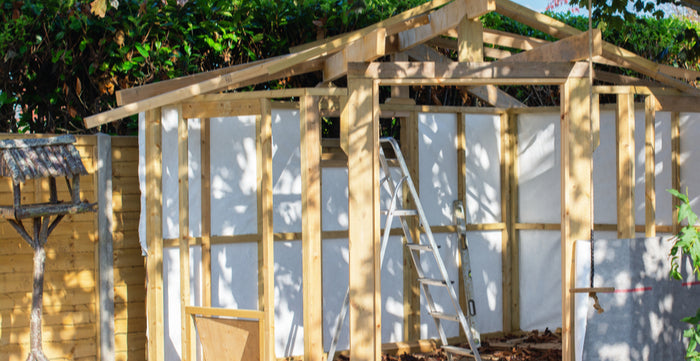
How To Waterproof A Shed
Date Published: August 20th, 2020
While sheds are a worthy investment for storage, garden offices and more, it’s important to get as much for your money as possible. Unfortunately, many sheds face the effects of water damage, rot and more due to the weather. If you keep items of importance in your shed, it’s crucial to make sure that it is waterproof.
In order to fully waterproof your shed, you will need to make sure that some basic requirements are met. For example, you will need to have the right foundation, drainage system and have removed all nearby plants that can make dampness worse. Follow the steps below to waterproof a shed in no time.
Back To Basics
Ideally, your shed won’t sit directly on the ground. Sheds that don’t have a proper foundation can be susceptible to insect infestation or harbour mould. The best way to prevent this is to give your shed a base. You can either build this yourself or purchase one. Choosing a wooden base can help with air circulation and help to fight off any rot. If your shed is large and houses heavier objects, you may need to opt for a concrete base.
Check The Windows & Doors
An essential part of keeping your shed watertight is to keep an eye on your windows and doors. Though cracks can be small, they’re big enough to let water droplets through and cause long term damage. To stop this from happening, fill any cracks with builder’s caulking or foam.
Clear Your Gutters & Check Your Roof
If your shed has gutters, make sure that they are regularly cleaned of debris such as leaves. One common cause of flooding is a blocked drainage system. If you don’t have a drainage system for your shed, you might want to install one. Doing so can help with any issues caused by mud or leaves on the roof of your shed.
The roof of your shed is the place where you’ll find most of the damage caused by water. If your shed roof has felt shingles, you may notice deterioration over time. If you need to, replace roofing by patching new felt or rubber sheeting.
Add A Wood Preservative
Choose a preservative that has a waterproof stain. These are ideal as they dry quickly and keep damp to a minimum. When applying a preservative, ensure that there is plenty of room for you to paint and that you have air circulation running through the shed.